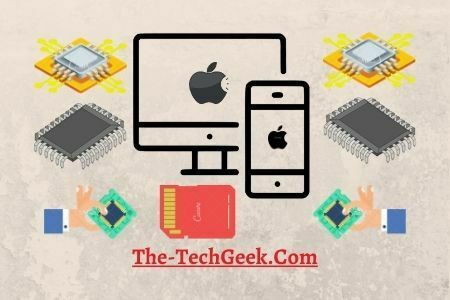Apple is renowned for its premium, cutting-edge technology, and privacy-focused products for its loyal premium customers. The company announced to cut its 15-year old tie with Intel to build its own chips for its Macs instead of depending on Intel in Nov 2020.
Although Apple had already started to make its own processors for its mobile and tablet devices earlier in 2010, now it’s adopting the same strategy for its laptop and desktop devices.

Well, before digging deep into why the company took the decision, let’s have a glance at the brief history from the beginning of its revolution.
A Brief Throwback
Steve Jobs, the most revolutionary CEO and co-founder of Apple launched iPhones in 2008, sophisticated with the ground-breaking tech of that time. However, he was well aware of the shortcomings too. They didn’t have any front camera. The battery life sucked, and as a whole, there were power optimization issues.
The components were from various vendors, including a few elements from the Samsung chips. So, there was a lesser opportunity for Apple to optimize them for the most excellent performance. Sooner or later, Jobs understood that to create and deliver unique premium products, they must build their own processors.
The microprocessor or chip is the brain of any modern computing device. It is responsible for the device to work smoothly and flawlessly without lagging. When the chip is not optimized accordingly, the device fails to deliver its most optimal performance. If a bug is found in the new release of a software, it can be fixed. But, what can be done when the hardware(the chipset) itself is not suitable?
Although the tech behemoth started to manufacture its own chipset earlier in 2005, it was halted by the legendary CEO Jobs himself. It was industry practice for the mobile device manufacturer back then to outsource the chips from the processor specialist players like Intel, Qualcomm. These players invested hefty billions into the R&D of the semiconductor chipsets.
So, it was a kind of risky decision for Apple to start building its own chips again. That’s the reason why Apple acquired P. A. Semi, a startup based in Silicon Valley, for a deal of $278 million. It specialized in designing power-efficient chipsets.
Since then, Apple came a long way when it introduced the more power-efficient and optimized ARM-based processor A4 in 2010 in iPhone 4 and iPad, and now, it’s planning the same for its computer devices.
The Prime Reasons
Apple will now use the same ARM-based M1 processors for its Macs that they used in their mobile devices. These processors are way more power-efficient and optimized than the previous x86 Intel chips.
Controlling the Core Tech
The secret recipe behind the marvels of electronic devices lies in its silicon chips. Apple always had the intention to own and control the whole stack of core technologies from the beginning of its rise.
Moreover, controlling the own chips could give Apple the opportunity for in-depth integration among its technologies and for more customer-oriented customization. Besides, it could help Apple to innovate at its own pace since all of its electronic devices will come under a similar framework.
Apple started this long-term process by acquiring P. A. Semi back in 2008 and now even spends a big chunk of its revenue on its R&D.
More Optimized and Power-efficient Performance
Apple claims that the new M1 Macs powered by ARM-based silicon chips are more efficient in performance and power-saving giving prolonged battery life than the older Macs with Intel chipsets.
The similar chipsets used in the iPhones and iPads had significantly outperformed the older ones giving better performance and longer battery life even though they had considerably smaller batteries. As per Apple, the M1 Macs can provide a battery life twice the older Intel-based Macs. However, the claims are yet to be tested and verified.
Intel’s Sluggish Manufacturing
With the emergence of innovative technology, Intel has failed to build chipsets as per the requirements of Apple. Apple will use 5 nm transistors in the new M1 chips. But, Intel can produce only 10 nm transistors.
Usually, the efficiency of a processor depends upon the number of transistors that can fit into it. The more, the better.
Moreover, Intel had faced many challenges over the last few years from its manufacturing end. But, Apple has the option to choose its chip manufacturing partner, TSMC, for the 5 nm chipsets over Intel. Taiwan Semiconductor Manufacturing Company(TSMC) builds the processors for iPhones and iPads. Moreover, the backfall of Intel has allowed ARM-based processor designers to grow. Apple is one of the first and best among them.

